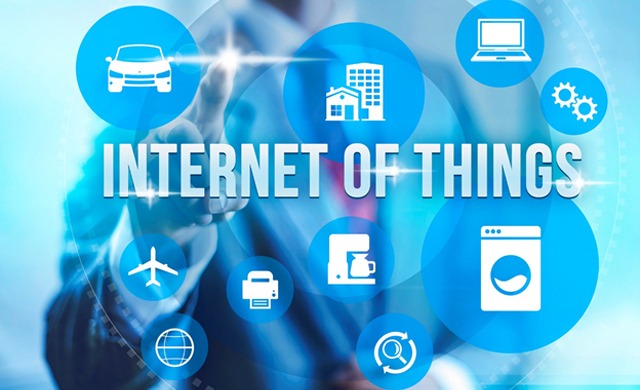Blockchain and the Internet of Things (IoT) have rapidly become two of the most talked about technologies across the globe – and for good reason.

There are numerous benefits of integrating the IoT with blockchain technology. However, we’ve still got some way to go before these two revolutionary pieces of technology become fully integrated.
The Benefits of Combining the IoT With Blockchain
First and foremost, one of the major advantages of building a group of connected devices able to communicate via the blockchain is that of significantly increased oversight.
Blockchain records are transparent. This means that when data is transferred between multiple networks a permanent, immutable record of the supply chain will be created. This activity can then be analyzed by anyone who is authorized to connect to the network.
However, arguably the biggest benefit by far is that of increased security. Undoubtedly, it is one of the greatest challenges faced by IoT today. Most IoT networks are currently hosted on a centralized authority. This means that they have a central point of failure.
One of the most prolific examples of this was the Mirai botnet attack – a huge distributed denial of service (DDoS) attack back in October 2016 that left most of the internet completely inaccessible on the east coast of the U.S.
By removing the concept of a centralized authority in place of a decentralized server using blockchain technology, we can significantly reduce the risk of IoT devices being compromised.
What Are the Roadblocks to a Decentralized IoT?
One of the biggest reasons that blockchain hasn’t yet been applied to IoT devices properly is that the IoT devices themselves simply can’t support the current blockchain model without suffering from masses losses of both power and energy.
The two major mining protocols in use right now are Proof of Work (PoW) and Proof of Stake (PoS).
PoW is currently the most popular protocol and the one used by Bitcoin and many other popular cryptocurrencies. The more blocks the user mines, the more rewards they receive. However, this protocol requires an extremely high amount of power consumption and computation power and transactions take a significant amount of time. Most significantly, it is not compatible with IoT devices at all.
PoS is used by the likes of NEM and PeerCoin. In the near future, Ethereum also plans to switch to this mechanism. It works a little differently to PoW in that compensation increases as people get paid more. It also requires less computation power and power consumption and has transaction times of only a few seconds. Most importantly, it is compatible with IoT devices.
However, it is far from a perfect solution, and there is still much improvement to be made before wide-scale adoption is likely or even possible.
How Can We Make Blockchain Integration With IoT Simpler?
Considering this is such a glaring issue, several platforms are already working towards integrating blockchain with the IoT.
One of the main platforms taking the spotlight right now is IOTA – a transaction settlement for the IoT. However, there are many glaring issues with this method. For starters, in order for it to actually become feasible, it would first require a significant number of users to start hosting and processing the transactions.
Another potential solution to the problem is IOTW. Unlike IOTA, which uses a Directed Acyclic Graph known as Tangle, IOTW is actually a blockchain solution. The main feature of IOTW that sets it apart from other cryptocurrencies is its mining protocol.
IOTW has invented a new way of mining called Proof of Assignment (PoA). This mining protocol requires significantly less computational power than both PoW and PoS and does not require highly priced processors. The IOTW blockchain software will be open-SDK. This means that just about any smart and connected device will be able to download the blockchain app and become a part of the IOTW ecosystem.
In fact, ordinary users can even use their everyday electrical appliances to mine IOTW coins without significantly increasing their electricity bill. To make it simpler, IOTW has even invented a digital power system chip (‘DPS Chips’) designed to drastically simplify the traditional power systems of electrical appliances. Compared to traditional power systems, these are cheaper, more energy-efficient, more programmable, and more suited towards IoT.
A Decentralized IoT is Not Only Possible – It’s Likely
Despite the challenges we’ve faced, there’s no doubt that a decentralized IoT is becoming increasingly likely.
The race to bring this concept to the mainstream is on – and competition is only going to get fiercer over the coming months.
The big question is, which will come out on top?

 Hot Features
Hot Features












